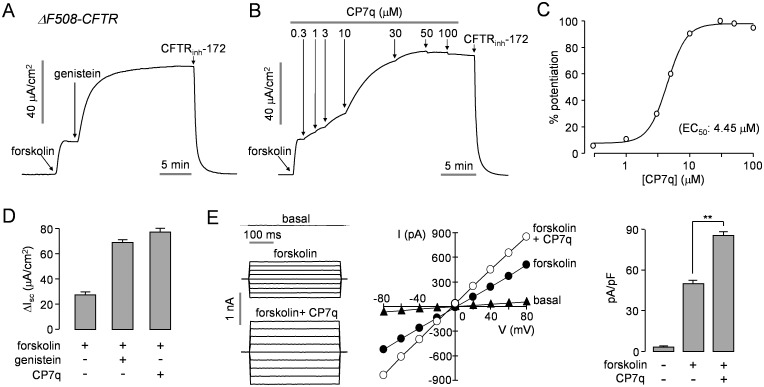Fig 4. CP7q potentiates ΔF508-CFTR.
Apical membrane currents were measured in FRT cells expressing human ΔF508-CFTR rescued by low temperature (27°C) incubation for 24 hours. (A, B) CFTR was activated by addition of 20 μM forskolin and potentiated with 50 μM genistein or different concentrations of CP7q. CFTR-dependent current was inhibited by 10 μM CFTRinh-172. (C) Summary of CP7q dose-response data (mean ± S.E., n = 3). (D) Summary of peak current (mean ± S.E., n = 3). (E) Whole-cell ΔF508-CFTR Cl- currents were measured in FRT cells expressing ΔF508-CFTR rescued by low temperature (27°C) incubation for 24 hours (left panel). ΔF508-CFTR was activated by 10 μM forskolin and potentiated by 10 μM CP7q. Current/voltage (I/V) plot of mean currents at the middle of each voltage pulse (middle panel). Summary of current density data measured at + 80 mV (mean ± S.E., n = 5, right panel). **P < 0.01.

